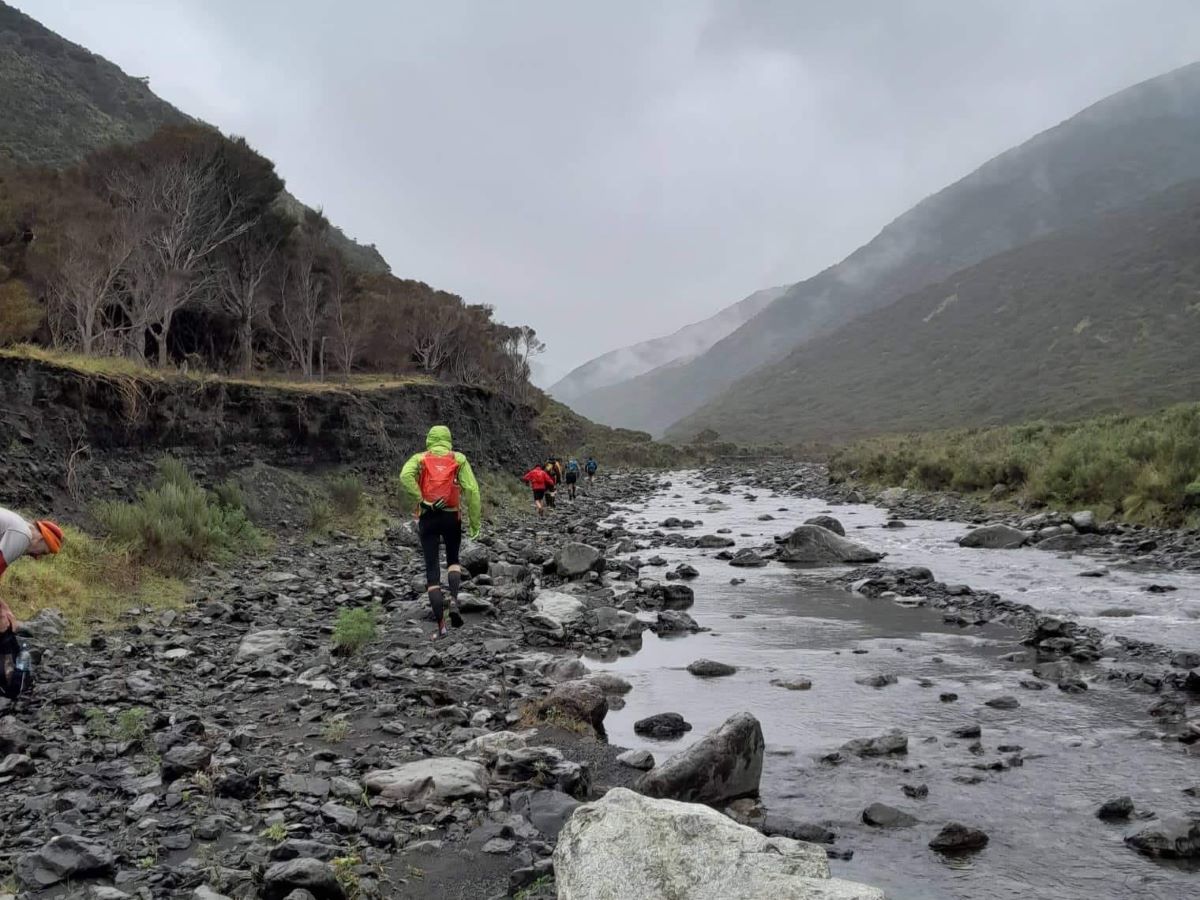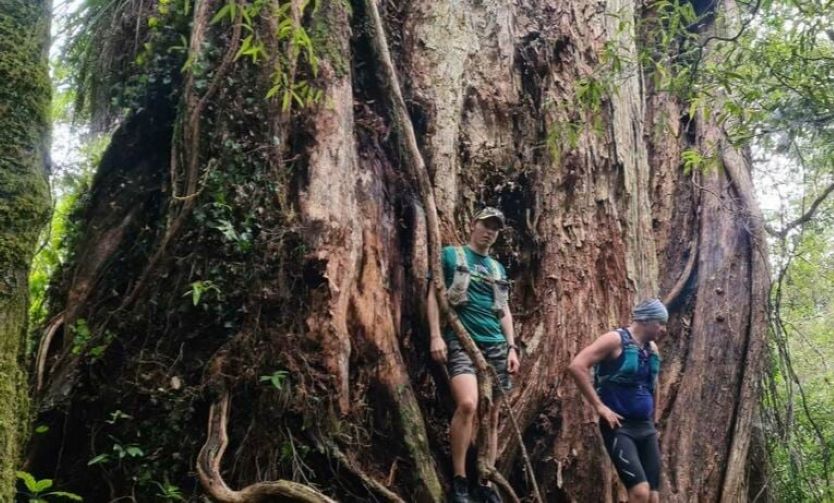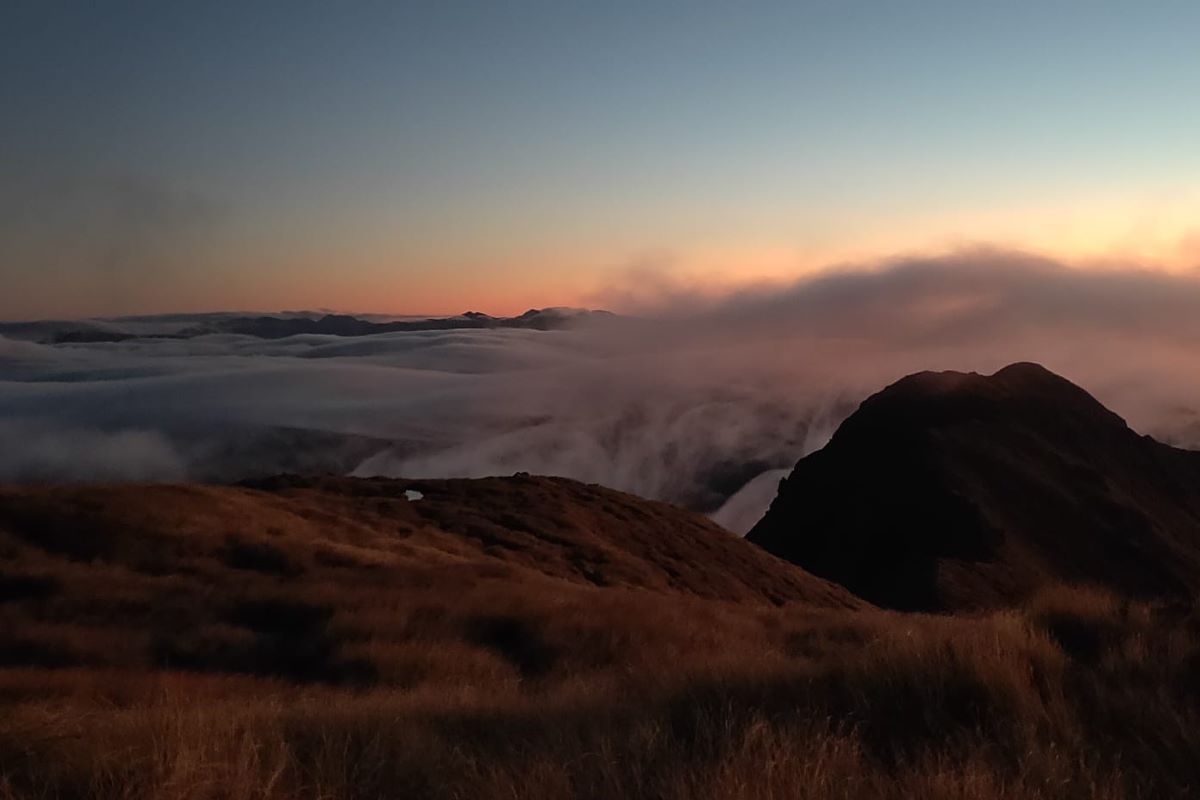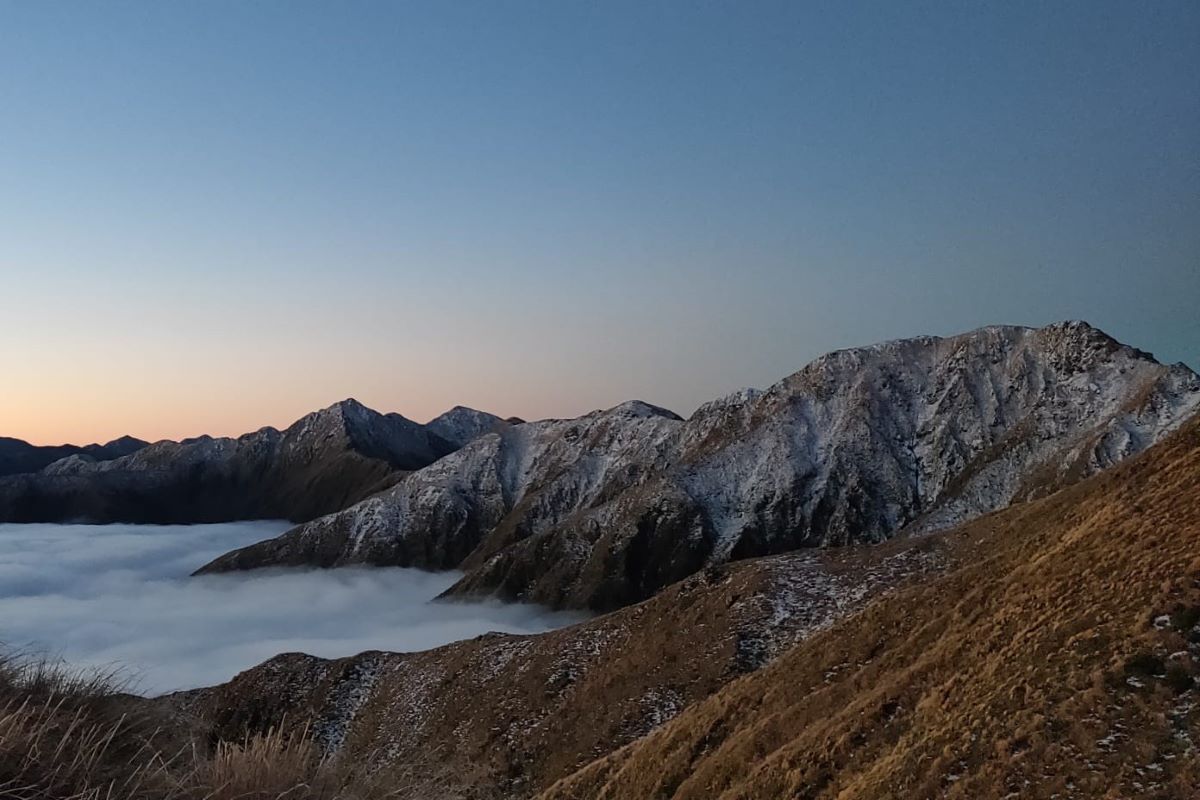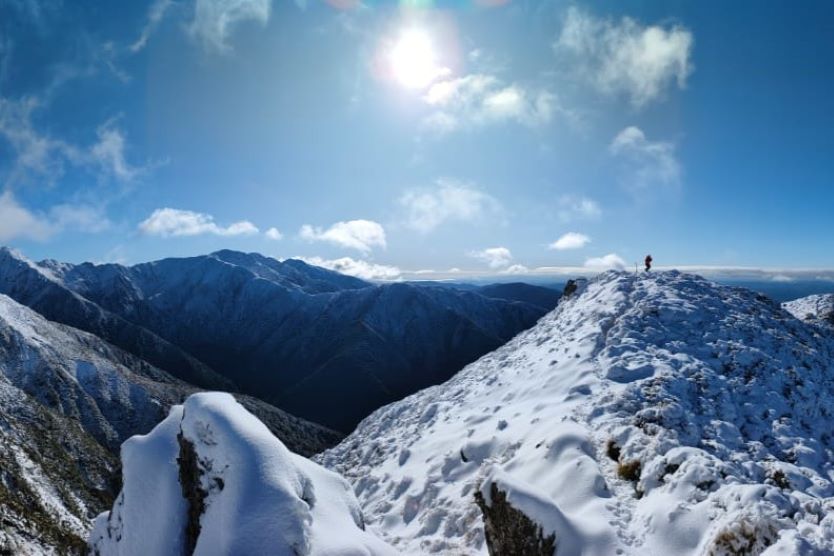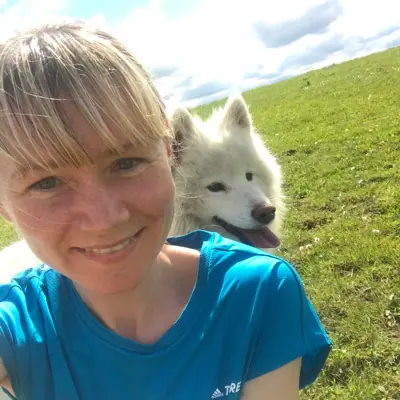New Zealand is a country that takes its wilderness seriously. Roughly 30% of the landmass of its beautiful twin islands is made up of protected wilderness areas. These areas are preserved in as close to their natural state as possible, with native bush and wildlife and restricted motorized access. This is great news for folks who like to run far in wild places, and one community that is doing just that is Wellington’s Big Sunday Runs group. The informal running community operates out of a Facebook group, which currently has about 650 members, and proudly credits itself with, “getting out of family duties since 1995.”
The group was started by Christopher Martin, who began his running life as a short-distance cross-country runner. Having spent some time in England’s Lake District, he got to know some fell runners and ultrarunners, which sparked an interest in bigger mountain adventures. Upon moving to Wellington, New Zealand, he established an informal group, initially by email, for people who wanted to run in the hills.
He said, “When we started the group, there was about 12 of us. We used to do one- to four-hour runs on a Sunday. Some of the events that were happening around Wellington at that time, in the early days, were The Goat and the Tararua Mountain Race. I just got addicted to trail running and the wilderness!”
The Rise of the Big Sunday Runs Group
As the group began to expand, operating via an email thread started to become unruly and it was suggested that the runners start a Facebook group. Martin said, “It grew to 500 to whatever we have now. It’s been one of the things that built the running community in Wellington. There were a few other factors in conjunction and the growth of wilderness running around the world also.”
Wellington, New Zealand’s capital, is situated in the south of New Zealand’s North Island. The city has a population of approximately 212,700 people and a culture of appreciation for the outdoors.
As Martin says, “Wellington is great because within about an hour you’re at the southern tip of the Tararua Range, and within about two hours, you’re at the northern tip, and you can go on the east side or the west side. And then we’ve also got the Remutaka Range, another wilderness area, an hour away. It’s all very accessible.”
The Tararua Range stretches some 50 miles from northeast to southwest, and the majority of the range is protected wilderness. The Remutaka Range is the southernmost mountain chain on New Zealand’s North Island. It incorporates the Remutaka Forest Park — 85 square miles of mountains and trails, with protected species of plant, bird, and animal life, and a network of mountain huts that lend themselves well to multiday adventures.
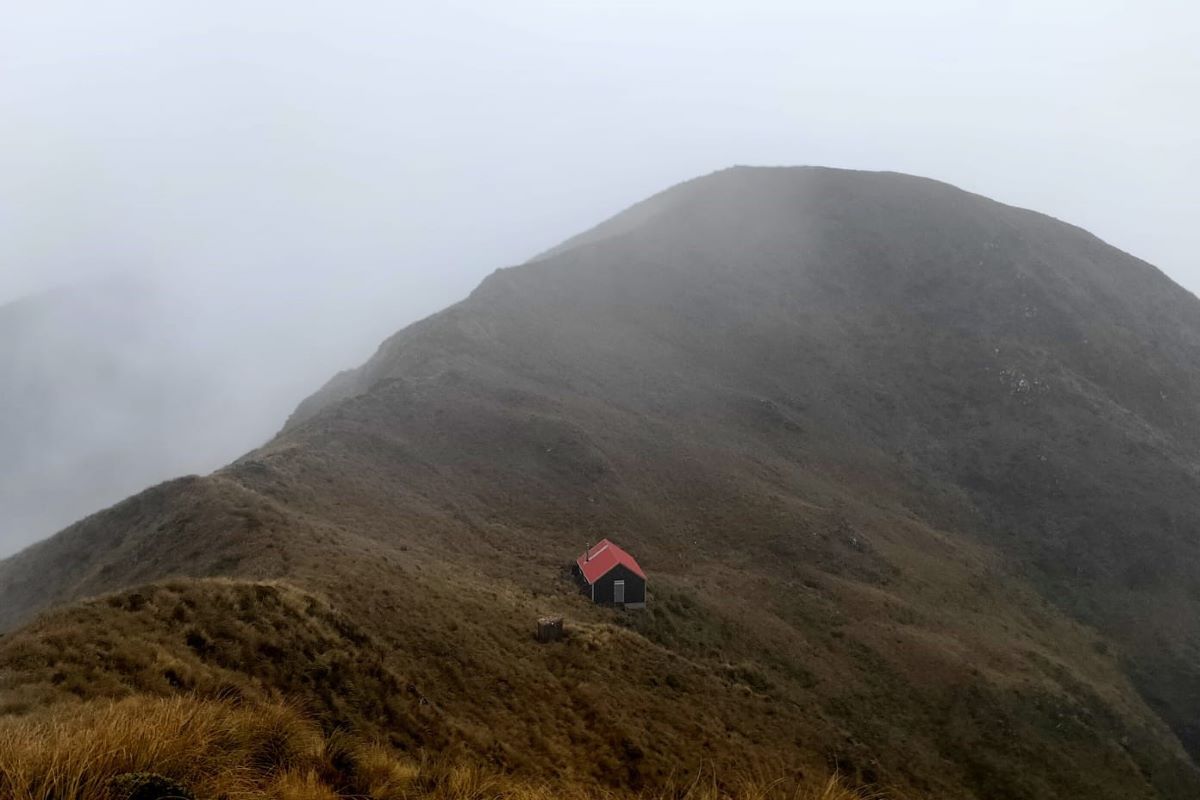
A lone hut in the Remutaka Range. The hut system in New Zealand offers valuable shelter from the ever-changing weather. Photo: Kyle Malone
As Chris Martin puts it, the outings organized by Big Sunday Runs “are not your average runs. It’s for big missions, for people training for ultras and wilderness missions. It’s a niche group. We’re there to support newcomers too because we have real respect for the wilderness. Because if you don’t have respect for the wilderness, it can be a very dangerous place. So, our community is there to support people who want to gain experience.
“In the same way that I had experience passed on to me by senior members of the Wellington running community, I try to garner that respect in the younger people coming through. To give them that competence in the mountains. I always push home that it’s all about self-sufficiency — never rely on anyone else.”
Martin is also race director for a number of popular mountain races in Wellington. These include the Aorangi Undulator, a 33-kilometer race, which takes competitors through five valleys and four undulations among the mountains of the Aorangi Forest Park. Alongside this single-stage race is a 100k three-day stage race, the Aorangi Undulator 100. The Mukamuka Munter, another local favorite, follows a 30k route from the coast at Ōrongorongo River mouth, and crosses valleys, rivers, and native bush through the Remutaka Range.
Kyle Malone, another prominent member of Big Sunday Runs, describes these races as having a “phenomenal, small race atmosphere. No one is forgotten about and it’s just an awesome time.”
Big Sunday Runs participants form a lot of the volunteer pool for these events — often made up of injured runners who don’t want to miss out on the fun. The routes through wilderness areas are generally inaccessible for crews, which levels the playing field as every runner has the same level of support — from volunteer-run aid stations, generally in some of the many huts.
This year, in order to make the challenging route safer and more accessible for newcomers, the Aorangi Undulator will have a “newbie pack leader,” to guide a slower group wishing to complete the challenge non-competitively.
Malone was a rower for many years through high school and university, but found that the demands of training for the sport didn’t leave him much free time to explore the mountains and the beautiful landscape around him. Finding mountain ultrarunning was a brilliant way to combine a sport with exploration of his spectacular backyard, and to catch up on what he felt he’d missed out on the years previous. He said:
“Being able to cover a six-day hiking trail in a day really speeds things up!” He stumbled on the Big Sunday Runs group online, first joined the runs in 2018, and has been a regular ever since.
As with most mountain climates, weather can sometimes make things challenging. As Malone said, “It’s horrendously windy here most of the year! It’s because we’re situated at the southern end of the North Island — the winds traveling across from Australia get funneled between the two islands of New Zealand, which can make it a pretty unforgiving place. Our local mountain ranges are known for weather turning in a few minutes.”
Big Sunday Runs caters to a mix of genders and a wide range of age groups, from people in their 20s right through to seasoned runners in their 60s. Martin remarked that older runners seem to be more drawn to big wilderness adventures than young people, but that there is decent representation from all ages.
“We’ve got a good group of 20- to 30-year-olds now and they’re all supporting and encouraging each other. There’s quite a big group now and they’re sort of the future.”
Owing to the range of abilities and interests within this growing community, rather than there being one group run on a Sunday, members use the Facebook group as a platform to organize their own splinter groups and missions.
Martin says, “What generally happens is everyone at the weekend will do their own missions in smaller groups. People tend to gravitate to people within their own range of ability. All of the young guns who are fast, they go off and do their own mission and we only hear about it after!”
As well as the main Sunday missions, there is a tradition of a more sociable pub run every Tuesday. Runners from around Wellington converge for a run and a pint after, and take the opportunity to chat with other runners who wouldn’t necessarily be on the same weekend missions. This is a long-standing Wellington running tradition that precedes Big Sunday Runs.
Martin said, “That Tuesday group has been going for a lot longer than our group, we just sort of hooked into it!”
The Taraua Range S-K Traverse
The Big Sunday Runs group leaders are caretakers of Tararua Speed Records, a website established to log completions and fastest known times of various challenges in the Tararua Range. The main one is a full crossing of the Tararua Range, known as the S-K Traverse, running from Schormann’s to Kaitoke.
There are three different route options for the crossing, of varying levels of difficulty, and completion times are recorded separately for each on the website.
The most accessible route, the Valleys, travels on the eastern side of the range. The route is always below bush line, and has good access to water throughout, thus limiting what has to be carried. It still packs a punch with 3,400 meters of climbing over roughly 70 to 75k.
The hardest route, known as the Main Range, travels along the main watershed line. Malone said, “It sticks to the top. It’s constantly up and down. That route is about 80k with 6,900 meters of climb. You’ve got one 1,000-meter climb at the start and then it’s just death by a thousand cuts. You’re just constantly going up all day. It’s a brilliant route.”
The in-between route, known as Tarn Ridge, begins on the same path as the Main Range and then traverses diagonally across the range, and over the ridgeline from which it takes its name, to join on to the Valleys route for the second half. Malone described this route as “the best of both worlds, and the best views by a long way.”
Paying homage to the Bob Graham Round and other U.K. rounds, there is a target of under 24 hours for official completion of the S-K Traverse. At present, there are 33 recorded completions for the Main Range, 28 for the Tarn Ridge, and 75 for the Valleys. So far, nine people have successfully completed all three routes in under 24 hours each.
Recently, Big Sunday Runs group member Michael Stuart took on the arduous task of completing all three of the routes back-to-back-to-back. He finished in some 81 hours.
Malone, who accompanied him on the third leg, said, “He finished at nine o’clock on a Friday night, in this gravel carpark about a half an hour from Wellington, which would normally be pretty empty, and it was packed with people just celebrating him finish. It showed the level of support that people give within the group for things that most people would think are absolutely insane!”

Michael Stuart facing into his third sunrise on this triple traverse of the Tararua Range. Photo: Kyle Malone
Spreading the Spirit of Adventure
As the Wellington group continues to expand, one of the earlier group members who moved to Christchurch has established a second branch of Big Sunday Runs. “Big Sunday Runs (Canterbury Edition)” now has approximately 400 members in its Facebook group, and follows a similar ethos to that of its Wellington parent group. In the future, it’s likely that we will see Big Sunday Runs groups popping up in other areas of New Zealand and beyond.
In the era of climate change concerns, when we are all becoming more mindful of the impact of travel on the planet, we can certainly learn a little from this group of curious explorers, who seek and find adventure every weekend in their own backyard wilderness.
Call for Comments
- Have you run in any of the mountains or places mentioned in this article? How was it?!
- What off-road running community would you like to see featured in this column next?

